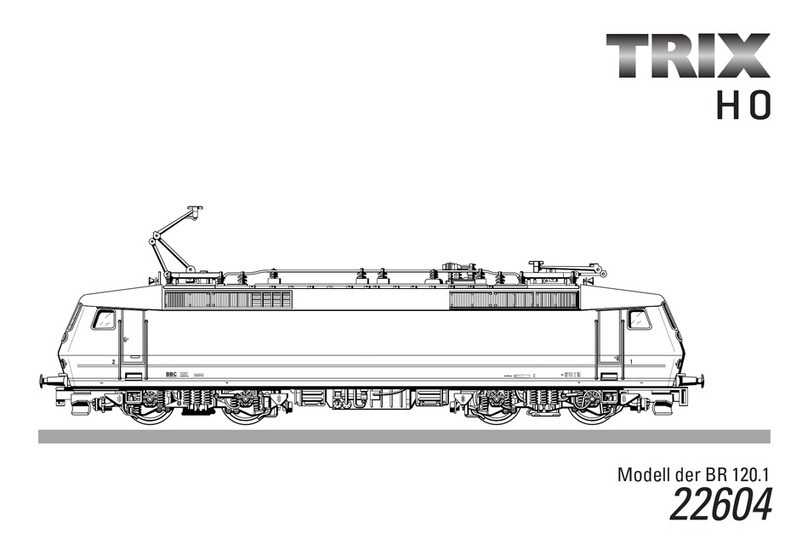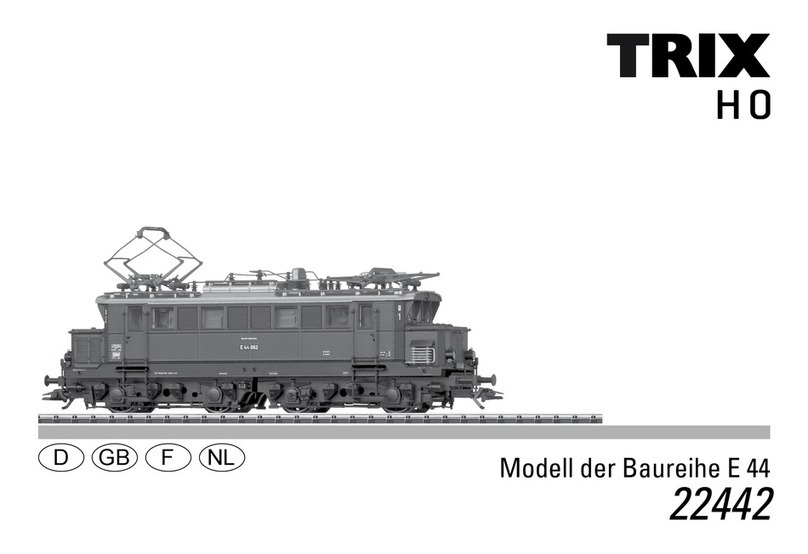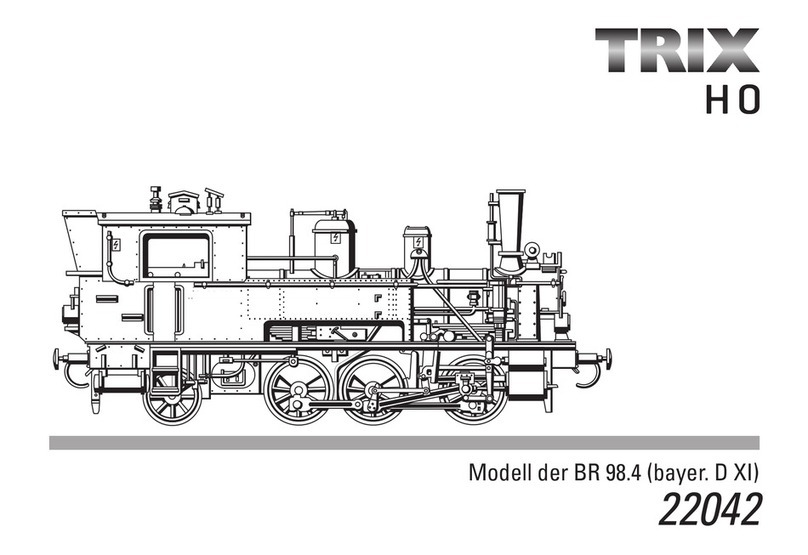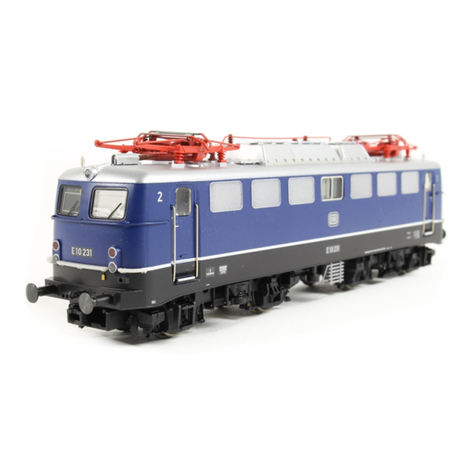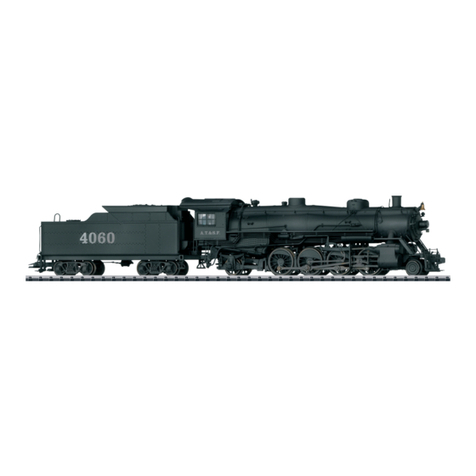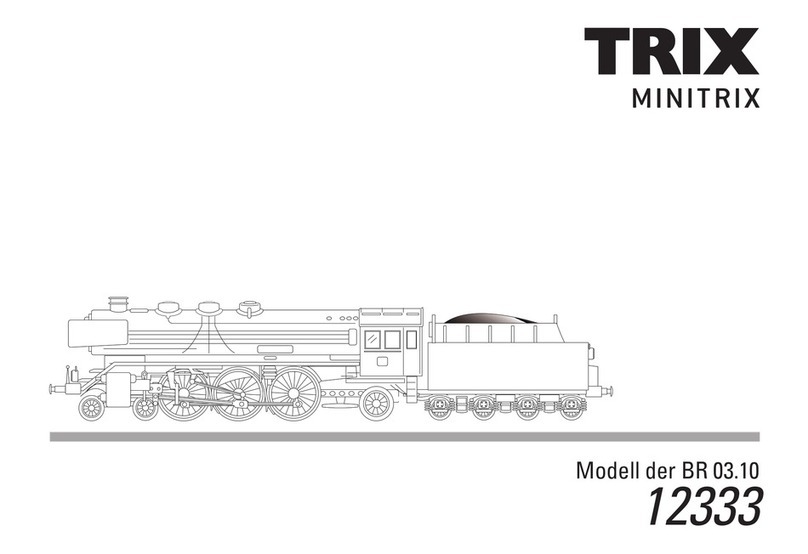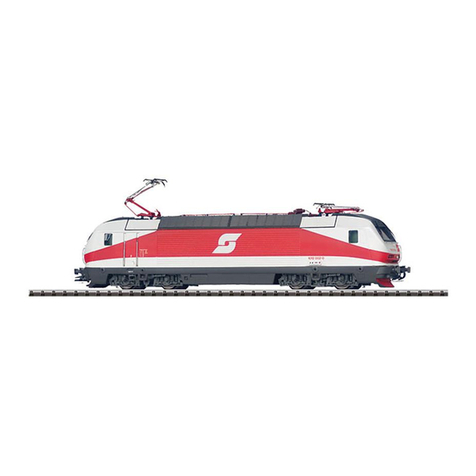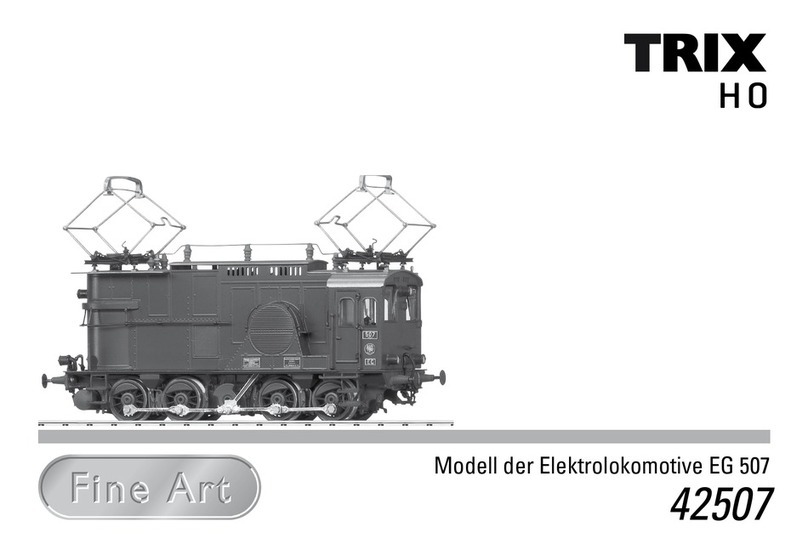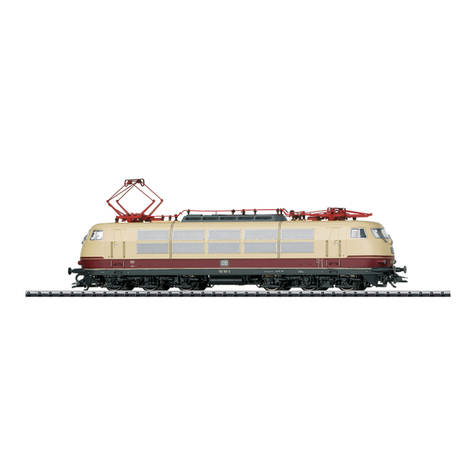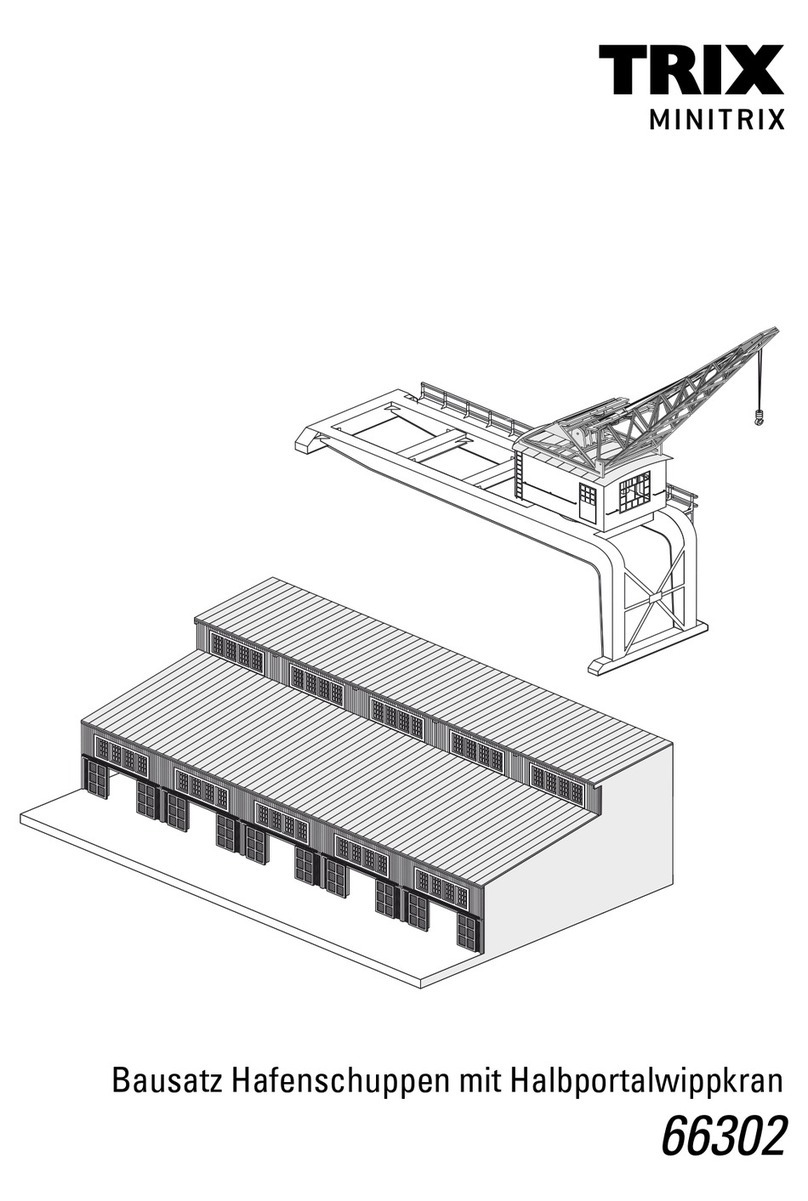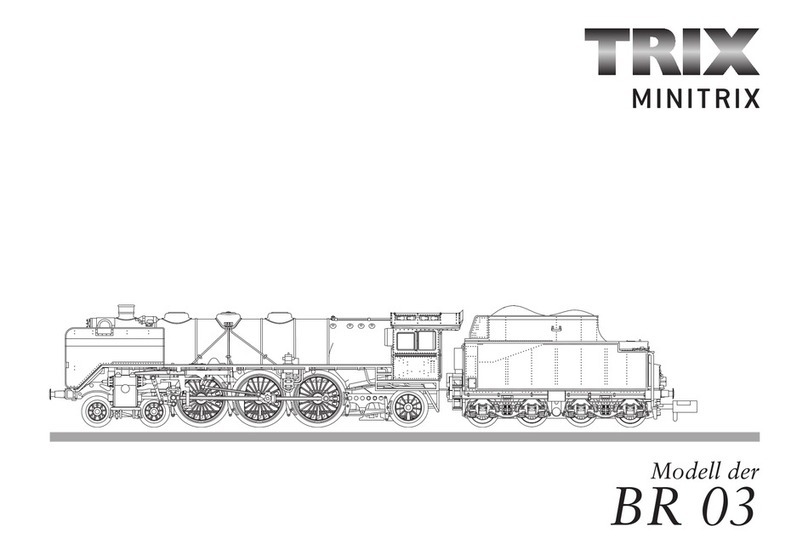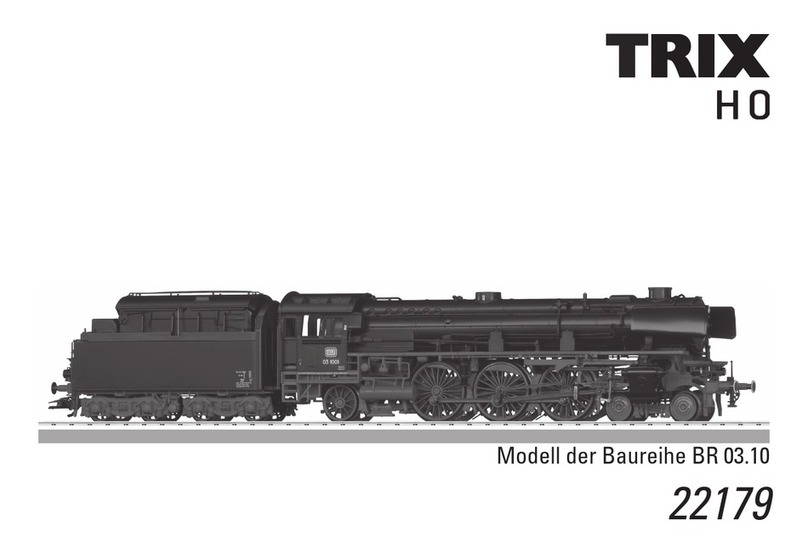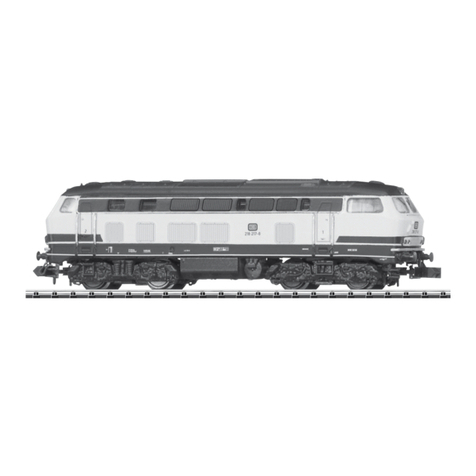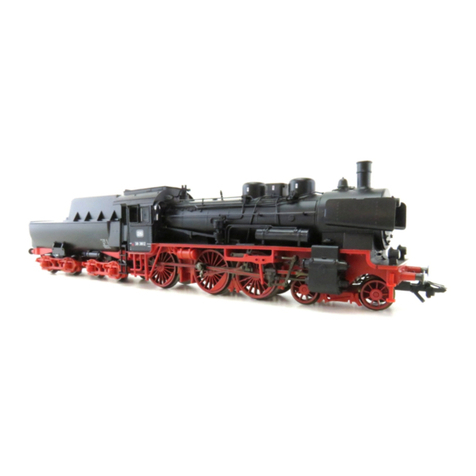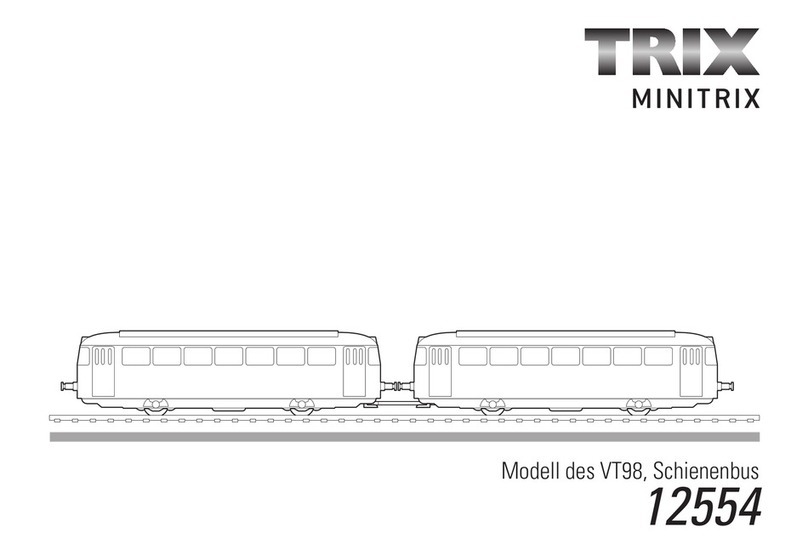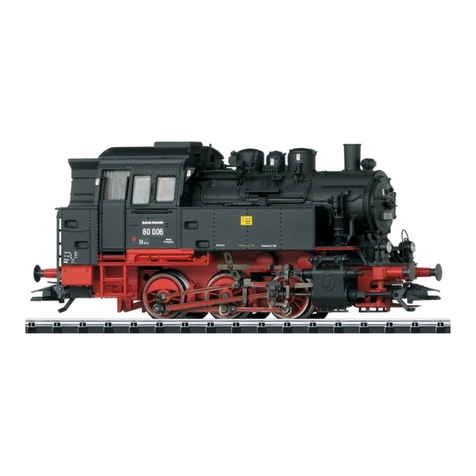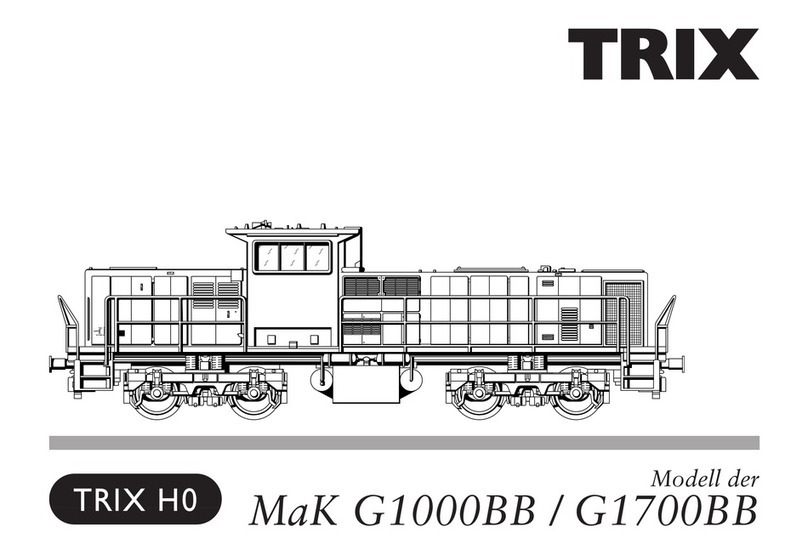4
Informations concernant la locomotive réelle
Les pentes raides du tronçon séparant Ogden / Utah de
Cheyenne / Wyoming, avec une grimpée allant jusqu’à
17,7 ‰, mirent l’Union Pacific à rude épreuve à la fin des an-
nées 1930. Il fallut accoupler jusqu’à 4 locomotives à vapeur
l’une derrière l’autre pour arriver à tirer les lourds wagons
de marchandises sur ce trajet montagneux.
C’est la raison pour laquelle l’American Locomotive Corpo-
ration reçut l’ordre de concevoir une locomotive à vapeur
capable de tirer toute seule les trains lourds de 3600 tonnes
sur ce parcours. C’est ainsi que naquit la «Classe 4000»,
mise en service en 1941, qui se fit une réputation dans le
monde entier sous son surnom de «Big Boy». Avec ses
performances et ses dimensions, cette locomotive avec
disposition d’essieux 4-8-8-4 éclipsa tout ce que l’on n’avait
jamais vu jusqu’à présent et resta jusqu’à aujourd’hui la
locomotive à vapeur la plus grosse du monde.
Informatie van het voorbeeld
De steile berghellingen met tot wel 17,7 ‰ steiging op het
traject tussen Ogden / Utah en Cheyenne / Wyoming noop-
ten de spoormaatschappij Union Pacific eind jaren dertig
tot een bijzonder hoge inzet van mensen en materieel. Zo’n
vier stoomlocomotieven moesten achter elkaar gekoppeld
worden, om de zware goederentreinen op dit traject te
kunnen trekken.
Om die reden werd de American Locomotive Corporation
met de bouw van een stoomlocomotief belast, die deze
3600 t zware treinen op het traject in zijn eentje aan moest
kunnen. Het resultaat was de in 1941 in dienst gestelde
Class 4000, die onder zijn bijnaam ”Big Boy” wereldwijd
bekend werd. Met haar prestaties en afmetingen stelde
deze loc met de asindeling 4-8-8-4 alles wat er tot dan toe
gebouwd was in de schaduw en bleef tot op heden de
grootste stoomlocomotief ter wereld.
Caractéristiques techniques :
Longueur totale de la locomotive: 40,51 m
Poids total: 540 t
Puissance: 4560 kW (6200 PS)
Vitesse de croisière : 64 km/h
Technische gegevens:
Totale lengte van de loc: 40,51 m
Totaal gewicht: 540 t
Vermogen: 4560 kW (6200 PS)
Reissnelheid: 64 km/h
